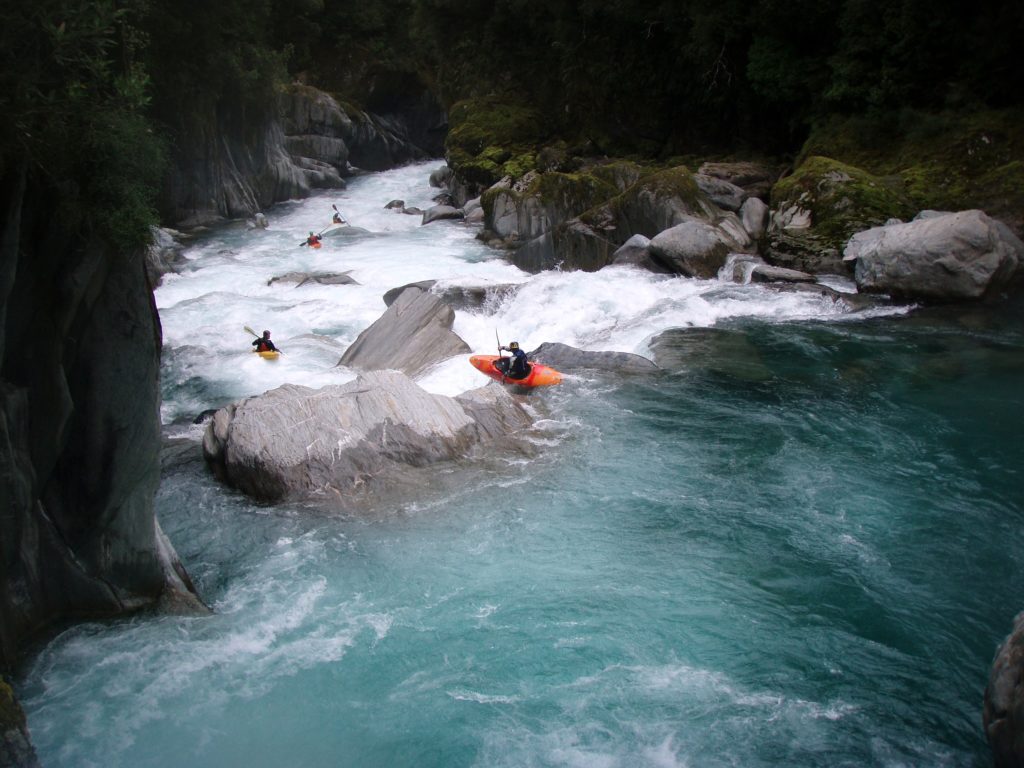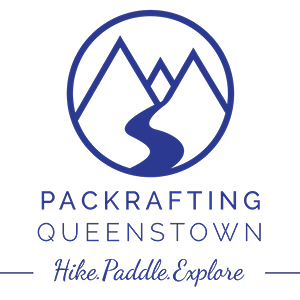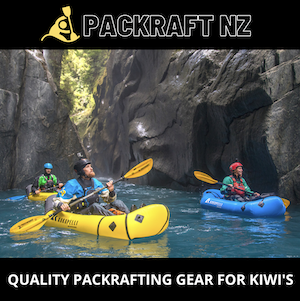“One of the most sought after and enjoyed runs in New Zealand. The Arahura rates as one of the great kayaking runs in the world. It has a wide range of runnable flow levels, great scenery, wild location and stunning whitewater.“
Graham Charles’ New Zealand Whitewater 5 (guidebook)
Thank you to Hugh Canard and Dan Clearwater for curating the text and images. The feature image is just below the entry to the ‘Second Gorge’
History
Of all the multitude of rivers in New Zealand there are a few which hold a special place in our history, like the Arahura – the river that is the symbolic source of ‘pounamu’, or greenstone. To pre-European Maori pounamu was highly valued – the name is synonymous with treasure, not only for its hardness and durability, but also because of its spiritual qualities. The West Coast of the South Island is called Te Tai Poutini (the Poutini coast), and the South Island itself is called Te Wai Pounamu, the place of greenstone. Poutini and pounamu loom large in Ngai Tahu culture.
The discovery of pounamu by the early Maori was a quantum leap in technology, as here was a material that held an edge better than any other material, enabling canoes to be hewn faster, and to make weapons of great durability and strength. This valuable material thus became the principal medium of exchange, and treasured artifacts were fashioned by the artisans and artists of these early communities. Journeys involving incredible hardship were undertaken, and ultimately inter-tribal wars were fought in the quest for this lustrous green stone. At the centre of much of this activity over a period of almost 1000 years, was the Arahura River.
Ngai Tahu owns all pounamu in situ. By all means look for it, but don’t keep it. Be aware that pounamu is not only a taonga, it is worth millions. I have met paranoid people in here. Some legitimate, and some probably not.
Hugh Canard
Kayaking background
The Arahura is described in Graham’s guidebook, and in the Whitewater New Zealand www.riverguide.co.nz The ‘classic’ kayaker run (which they call Arahura Gorges IV/V), is via helicopter to the flat above the bridge at ‘Third Gorge Creek’ back to the Milltown Bridge.
This section of the Arahura is included in the Waitaiki Historic Reserve, managed by a Ngai Tahu commercial entity and DoC. Kayakers, who need helicopters for access, have consistently been denied access on various grounds, none of which appear to bear much scrutiny. It is considered the test piece or rite of passage for kayakers aspiring to take on the upper gorges of the Hokitika, Waitaha, Whataroa and Wanganui catchments further south.
Packrafting approaches
Multi-day options 2-4 days
There are numerous ways to walk into the Arahura, following tracks either up the valley itself, via the Styx, Taipo or even the Waimakarirri. Huts are reasonably plentiful, although the tracks can be good ol’ fashion hard west coast work. Enjoy looking at the map and various websites to plan your adventure.

As you’ll read, the paddling is at expert level: you’ll need the right flows, lots of scouting, setting protection for drops and plenty of time for a successful descent. The classic multi-day would be three days: A long 7-8hr tramp into Mudflats Hut, followed by a day to Lower Arahura Hut, then out to the road.
Day trip options: The Cesspool to Milltown Bridge (II/III)
A great half day option, is to walk up the old logging road on the true right, (which crosses private farmland, so stick to the track!). Its roughly an hour up to the Cesspool swingbridge, where you figure out where you want to start. Beginning just downstream of the swingbridge starts with a little bit of III manuevering then soon relaxes into grade II back down to the milltown bridge. Alternatively, use the track to head upstream as far as your skill and wishes allow: read the paddling descriptions below for whats in store….

Day Trip options: Milltown Gorge (II+/III)
This section requires a car shuttle (but no walking) and is popular with kayakers and rafters alike. The take out is Arahura Valley Road, and put in anywhere along the Milltown road, depending on how much time and warm-up you want before the gorge. See the paddling description below.
The Paddling – top to bottom
View Larger Topographic Map
We encourage you to check out the Whitewater guide and www.riverguide.co.nz, for more info, but please note that when reading those descriptions, the text in the whitewater guide book doesn’t quite match the labels of “Second Gorge” and “Third Gorge” on the topographic map.
The sections are described from the top: up to you how you string them together. Just remember that this river has recieved very few packrafting descents: west coast kayaker grades usually feel ‘quite hard’ for what packrafters might have encountered elsewhere. Also note that huge floods change these rivers frequently: always use your eyeballs and brain in preference to anything written anywhere….
Harman Hut to Mudflats Hut (V/III+)
Local Kayakers helicoptered to Harman Hut and described the section down to below Styx saddle as “a funky, gotta do it once” adventure. The paddling would be for grade V boaters until the flats below Styx Saddle. Here at the flats, is another spot where helicopters have dropped off Kayakers, and the paddling reported as “III+” down to Mudflats Hut, but its a very remote area and there’s lots of water to come, so you should be a IV boater for that section.
Mudflat Hut to Lower Arahura Hut (III+/IV/V)
Mudflat hut would be the obvious start point for any packrafting groups planning to run the classic section of the river. Grade III+ paddling below Mudflats Hut leads into what is labelled as the “Third Gorge” on the topo map and is the start of a significant stretch of grade IV water.
For the ‘classic’ kayaking trip, kayakers have traditionally helicoptered into the flats where Third Gorge Creek and the track to Newton Creek Hut crosses. This is both a landmark and an escape route. The whitewater guide describes this as the ‘normal’ put in, “From the normal put in busy class III-IV rock gardens lead into Third Gorge.”
The grade IV continues with named rapids and quite a few sharp drops, some of which contain rocks. “Why is this rapid called Dent Falls?”.
For a while, the difficulty eases until Olderorg creek, which is the start point of what is known to kayakers as the “Second gorge”. (Bear in mind, though those words are labelled a long ways downstream on the Topo map.)
A crux V rapid signals the entry to second gorge and more serious IV paddling. Keep your eyes peeled for the hut on the left.

The first descent by kayak was from Olderog Creek to the Milltown bridge by Hugh Canard and two friends, at Easter 1985. Further descents followed in the 1990s and now polytechs groups and many others have run it. The first and only known packraft descent was by Roman Dial in 2010. It’s challenging and busy grade IV There is a crux rapid of grade V at the entrance to the Second Gorge. A lot of parties portage or seal launch below the first drop in the crux rapid. It’s packraftable by expert parties. There’s more power in the rapids in this section and they are longer and you do NOT want to swim.
Hugh Canard
Lower Arahura Hut to the Cesspool IV/II
Just below the hut the water is a little easier than above, apart from one big rapid (IV) which marks the end of what the kayakers call the ‘Second Gorge”.
Enjoy the relative calm of the grade II section down to the cableway.
The cable way marks the is the start of the Cesspool Gorge (IV), and indicates where the track provides a simple way to avoid the Cesspool Gorge.

The paddling in Cesspool Gorge is continuous and serious grade IV.
The Cesspool Gorge ends at the Cesspool, where there is a swingbridge up high.

Cesspool to Miltown Bridge (III/II)
Just downstream of the swingbridge, initially there is a little bit of grade III maneuvering, but soon the gradient relaxes into grade II back down to the Milltown bridge. This section makes a great half-day trip from the road for intermediate packrafters.
The Milltown Gorge (II+/III) – Milltown Bridge to Arahura Valley Road
This is a really nice section for amateur rafters and intermediate packrafters. It has road access at both ends. Start at the Milltown Bridge or anywhere off Milltown Road from Lake Kaniere. The river warms you up with some easy shallow braids and a few Grade II shingle chutes. The views are expansive and are forested slopes with farmed river flats on both banks. After an hour or so the view ahead closes off and this is the Milltown Gorge. The river closes in and you’ll see that there’s quite a decent flow. There are some big boulders in the flow and bedrock banks, creating the odd Grade III feature, but easily avoided so best described as Grade II overall. Deep clear pools, well-spaced rapids and native forest soaring above high banks.
The gorge opens out but there are lots of boulder rapids, including one that has some grunt. Some have bits of Pinus Radiata. This tree destroys packrafts. AVOID.
The best road accessible takeout is at the Arahura Valley Road, near the big bend before it intersects with Humphreys Gully Road and Blue Spur Road:
There are powerlines overhead, which makes it easy to spot from the river, with a small eddy for the take out. Scout it before you head to the put in!
You can combine the Milltown Gorge with the Mikonui River just south of Hokitika for a superb West Coast intro weekend.






